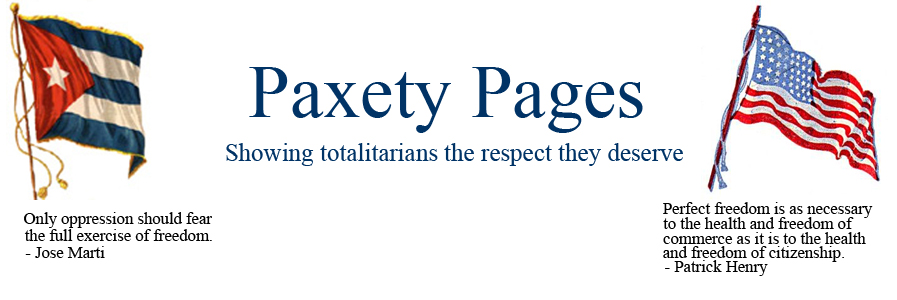Every apologist for the castro regime eventually gets around to mentioning the wonderful, free health-care system on the island. The Real Cuba has shown us how one system exists for the rich tourists – and another for native Cubans.
But the Cuban economic system can’t seem to provided needed medical supplies. The country’s medicines and supplies are being subsidized by Canada’s citizens. Canadian tourists volunteer to take suitcases filled with “spare” medical supplies to Cuban hospitals. From The Star:
It’s the simplest of ideas – have tourists take used suitcases full of donated medical supplies to clinics and hospitals in Cuba where they are desperately needed.
And it has been a huge success. Until now.
Last year, GTA tourists delivered 4,237 kilograms of everything from medicine and intravenous kits to masks left over from the SARS crisis there.
Note that the supplies are desperately needed. Also desperately needed is a free warehouse for the non-profit organization that organizes the charity.
Then there’s this. The Kansas City Community News sent reporter Steve Rose to Cuba. One of his reports focused on health care, and he used an ingenious method to write his story – he actually did some research. He got the folks at his hotel to tell him what hospital he’d go to as a tourist – and then what hospital he’d go to as a Cuban. Then he paid each hospital a visit.
I went first to the “Cuban poor” hospital. I walked into the lobby, which was massive and very clean. There was a smattering of visitors, all nicely dressed. In other words, they did not look poor.
How do you judge the quality of medical care by looking into rooms? I decided I would go to the intensive care unit, which I supposed would be a good barometer of health care. It was located on the 23rd floor, and outside the door, in Spanish, a sign clearly stated, “Access limited.”
So, I opened the door quickly and peeked in. What I saw was very surprising. There was a very large room with perhaps 20 or more patients lying in beds, all out in the open. And there were no monitors hooked up to any of the patients. The nurses in the room glared at me, and so I shut the door and left. I had seen enough.
Security was better at the tourist hospital, and Rose wasn’t able to sneak around. He settled for an interview with a doctor who, of course, stood up for Cuba’s system.
Cuban doctors spend six years in medical training and must serve two years in “social services.” That includes traveling to other countries, or becoming family doctors in Cuba, where they reside in special white-painted houses in every town, village and neighborhood to handle routine medical needs, at no cost.
My conclusion: Cuba does, indeed, offer a breadth of routine medical care for its 11 million citizens, for free. Care for more serious illnesses or more specialized surgeries is inadequate. And how can Cuba afford this free care? Simple. Starting doctors are paid only $20 a month, and many drive taxis in off-hours to make ends meet.
And here’s the punch line: I found out at the end of my trip that the “poor Cuban” hospital I had visited was exactly the hospital Michael Moore used for his documentary.
Ha.
